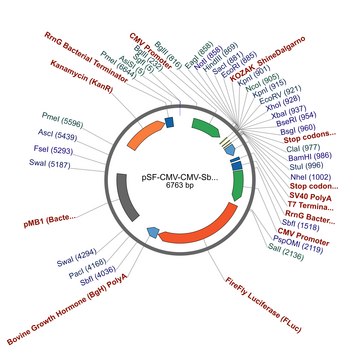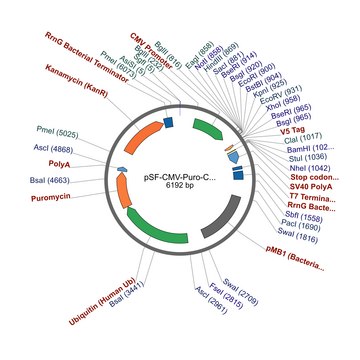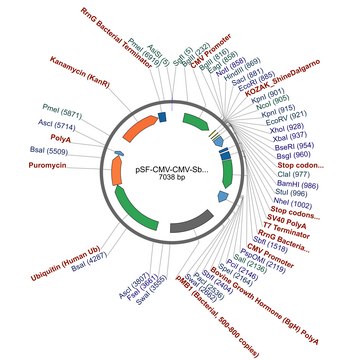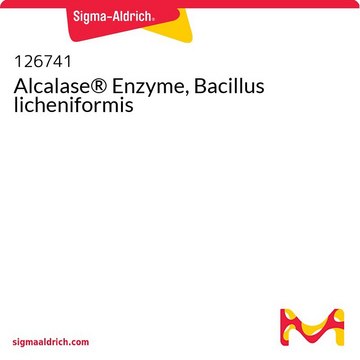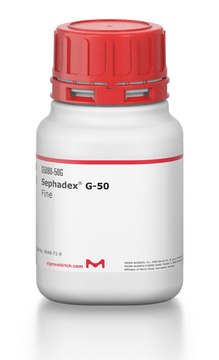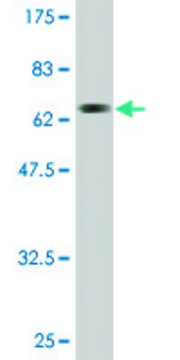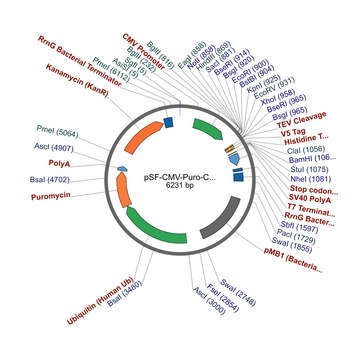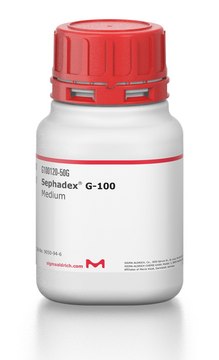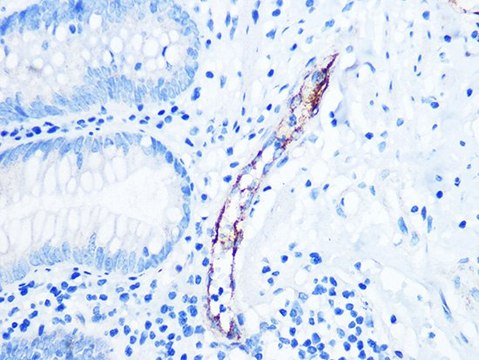OGS411
PSF-CMV-CMV-SBFI - DUAL CMV EXPRESSION PLASMID
plasmid vector for molecular cloning
Synonym(s):
cloning vector, expression vector, molecular cloning vector, plasmid, plasmid vector, snapfast vector, vector
Select a Size
CN¥1,808.60
Select a Size
About This Item
CN¥1,808.60
Recommended Products
form
buffered aqueous solution
mol wt
size 5131 bp
bacteria selection
kanamycin
Origin of replication
pUC (500 copies)
Peptide cleavage
no cleavage
Promoter
Promoter name: CMV
Promoter activity: constitutive
Promoter type: mammalian
reporter gene
none
shipped in
ambient
storage temp.
−20°C
General description
Promoter Expression Level: This plasmid vector contains the mammalian CMV promoter to drive gene expression. We have tested all of our mammalian promoters in a range of cell types and CMV is consistently the strongest in those we have studied. However there are many reports of the CMV promoter demonstrating silencing by methylation in long-term culture.
Application
Second multiple cloning site notes: The second MCS in PSF-CMV-CMV-SBFI - dual CMV expression plasmid extends from PspOMI to SpeI. This MCS contains a Kozak sequence immediately upstream of the start codon in the PciI restriction site. We insert the start codons of our genes into here where possible.
This MCS has been designed to be compatible with genes that are within our main MCS by using enzymes sites in the same order that produce compatible cohesive ends that can be ligated together. This allows genes to be transferred from the main MCS (NotI to NheI) into the second MCS (PspOMI to SpeI) is required. Enzymes that are compatible between these two MCSs include:
- PspOMI compatible with NotI
- ScaI compatible with EcoRV (Blunt)
- SalI compatible with XhoI
- PciI compatible with NcoI and BspHI
- AclI compatible with ClaI
- SpeI compatible with XbaI and NheI Avr2
Sequence
Analysis Note
related product
Storage Class Code
12 - Non Combustible Liquids
Flash Point(F)
Not applicable
Flash Point(C)
Not applicable
Regulatory Information
Choose from one of the most recent versions:
Certificates of Analysis (COA)
It looks like we've run into a problem, but you can still download Certificates of Analysis from our Documents section.
If you need assistance, please contact Customer Support.
Already Own This Product?
Find documentation for the products that you have recently purchased in the Document Library.
Our team of scientists has experience in all areas of research including Life Science, Material Science, Chemical Synthesis, Chromatography, Analytical and many others.
Contact Technical Service